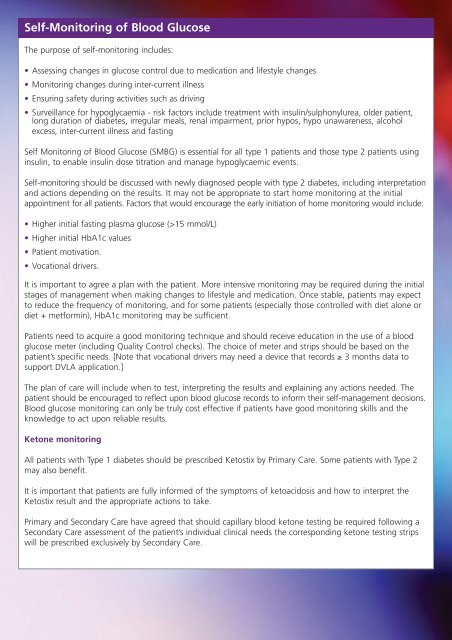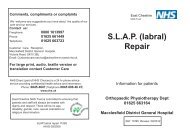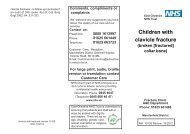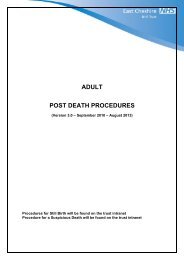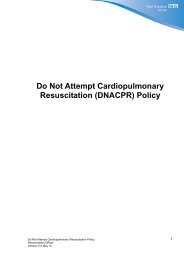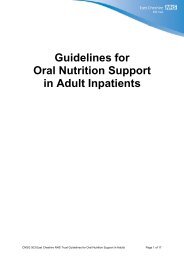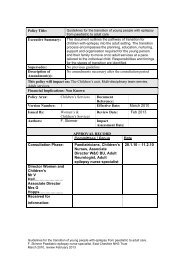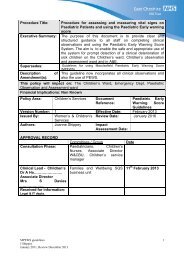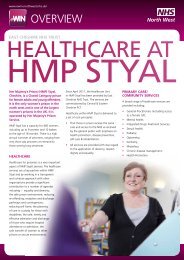Diabetes guidance 1766.pdf - East Cheshire NHS Trust
Diabetes guidance 1766.pdf - East Cheshire NHS Trust
Diabetes guidance 1766.pdf - East Cheshire NHS Trust
You also want an ePaper? Increase the reach of your titles
YUMPU automatically turns print PDFs into web optimized ePapers that Google loves.
Self-Monitoring of Blood GlucoseThe purpose of self-monitoring includes:• Assessing changes in glucose control due to medication and lifestyle changes• Monitoring changes during inter-current illness• Ensuring safety during activities such as driving• Surveillance for hypoglycaemia - risk factors include treatment with insulin/sulphonylurea, older patient,long duration of diabetes, irregular meals, renal impairment, prior hypos, hypo unawareness, alcoholexcess, inter-current illness and fastingSelf Monitoring of Blood Glucose (SMBG) is essential for all type 1 patients and those type 2 patients usinginsulin, to enable insulin dose titration and manage hypoglycaemic events.Self-monitoring should be discussed with newly diagnosed people with type 2 diabetes, including interpretationand actions depending on the results. It may not be appropriate to start home monitoring at the initialappointment for all patients. Factors that would encourage the early initiation of home monitoring would include:• Higher initial fasting plasma glucose (>15 mmol/L)• Higher initial HbA1c values• Patient motivation.• Vocational drivers.It is important to agree a plan with the patient. More intensive monitoring may be required during the initialstages of management when making changes to lifestyle and medication. Once stable, patients may expectto reduce the frequency of monitoring, and for some patients (especially those controlled with diet alone ordiet + metformin), HbA1c monitoring may be sufficient.Patients need to acquire a good monitoring technique and should receive education in the use of a bloodglucose meter (including Quality Control checks). The choice of meter and strips should be based on thepatient’s specific needs. [Note that vocational drivers may need a device that records ≥ 3 months data tosupport DVLA application.]The plan of care will include when to test, interpreting the results and explaining any actions needed. Thepatient should be encouraged to reflect upon blood glucose records to inform their self-management decisions.Blood glucose monitoring can only be truly cost effective if patients have good monitoring skills and theknowledge to act upon reliable results.Ketone monitoringAll patients with Type 1 diabetes should be prescribed Ketostix by Primary Care. Some patients with Type 2may also benefit.It is important that patients are fully informed of the symptoms of ketoacidosis and how to interpret theKetostix result and the appropriate actions to take.Primary and Secondary Care have agreed that should capillary blood ketone testing be required following aSecondary Care assessment of the patient’s individual clinical needs the corresponding ketone testing stripswill be prescribed exclusively by Secondary Care.


